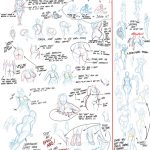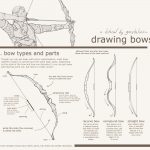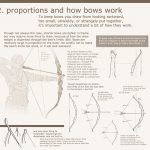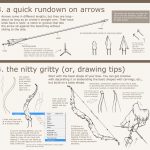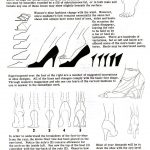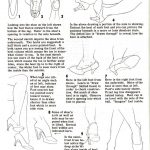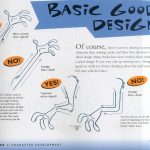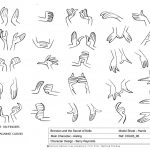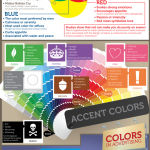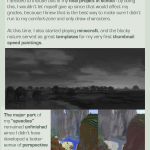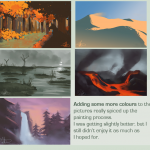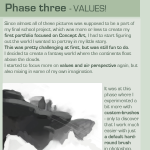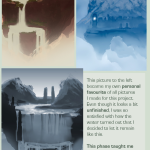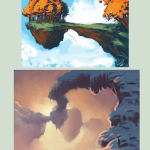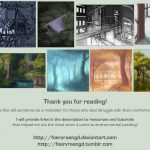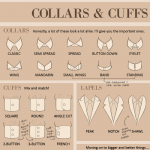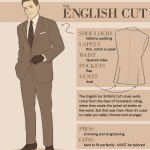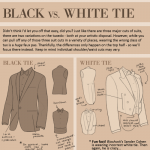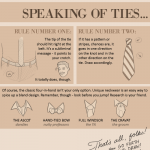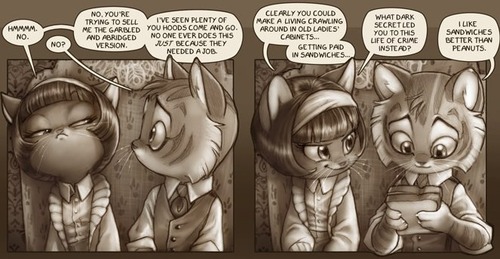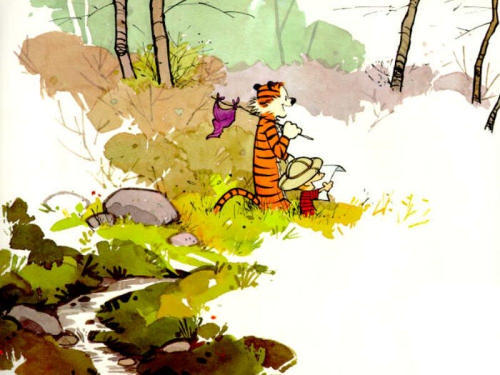Hand Tutorial 2 by *Qinni
Tag: tips
Untitled
– WARNING! BIG FILE ON MY DA PAGE TO DOWNLOAD AND ENJOY!
I decided to draw up some tips for drawing girls, since I _think_ I know what I’m doing with them. A lot of peeps have asked for them, so here’s a bit. Will have a male one when I get really confident with the dudes (which i’m progressing nicely in that area), but for now, this will suffice.
Let me know if there are any questions you have or anything else you’d like me to show you that’s reasonable. But just remember that you have to learn and study for yourself to get the idea.
REMEMBER, PRACTICE PRACTICE PRACTICE STUDY RESEARCH PRACTICE!
Other Tips:
– Using shapes for your gestures beats stick figure methods! Read this: [link]
– Draw constantly. Don’t just look at what you’re working on, study it! Learn why certain things connect the way they do, what muscles get tense in a position and relaxed, etc. Don’t just draw what you see.
– Come up with your own visual cues to help you “see” how a form works, like the McDonald’s Arches and Megaman Boot. You’d be surprised how easy it is for you to remember how something looks!
– With women, remember, dainty and curvy lines beats hard edgy lines! No matter the size of woman’s breasts or hips or proportions, these things always apply best: Hands with less lines, thinner fingers and smaller feet. Using line minimally also bumps femininity up if you’re not confident with what you’re doing yet. And curves always! Even on the straightest line, make it a bit curvy.
Untitled
okay guys someone the other day asked for a bow tutorial so here it is! :> I hope it is helpful.
It’s not exactly the most precise archery information but I included what was relevant in terms of actually drawing—and remember as always, references are great in addition to looking through tutorials
am I even qualified enough to make a tutorial? oh well it was funTumblr made them weeny but the magnifying glass will take you to full view
OR
As an ex-archer, I can confirm these are reliable notes!
dumb rant about boobs and crossed arms
elaboration here (http://littlefroggies.tumblr.com/post/28706407694/i-drew-this-super-super-fast-sorry-its-so) and here (http://littlefroggies.tumblr.com/post/28719210199/people-are-sending-me-a-lot-of-messages-that-are) because I don’t think people get what I mean by “under” boobs
Okay, took a short 10 minute break to doodle this. Trying to illustrate something that a lot of artists do, intentionally or unintentionally, when drawing kinda-busty to very-busty people. I’m no expert but I figured I’d just try.
1 – arms crossed without boobs as obstacle
2 & 3 – popular ways of drawing busty people unrealistically crossing arms
4 – a more natural and realistic way of crossing arms
Bonus – something a lot of inexperienced artists do to try to work around all obstacles at once, but end up drawing strangely long arms and torsos in the process.Lots of WORDS below…
Untitled
drawing tips from Animating the Looney Tunes way. hand from the secret of kells, Aisling!
Untitled
Useful since I’m trying to figure out what color to paint my room!
Although I’m really not buying their vague explanation for why pink is a “girl’s room” color. Not only girls need to be calmed by pink. This graphic even says that prisons sometimes use pink to calm down inmates.
Untitled
Source: FOERVRAENGD
List of tutorials that helped me with environmental painting:
“How to make your own Perspective Grid in PS” <—- this one is the best thing I’ve ever discovered. Srsly CHECK IT OOOOUUUUT!
Snuffen’s Background Tutorial P1More or less ALL tutorials by Griffsnuff is awesome, so make sure to check out the rest of them!
More or less ALL tutorials made by AquaSixio!List of youtube channels that also helped and inspired me:
FZDSCHOOL – More or less one of the most known concept art-related resources I know on youtube. It’s great to sit and draw and just listen to the talking.
SinixDesign– This guy is also great! He has some design workshops ever now and then where the viewers can send in their stuff for critique! very encouraging and inspiring!
moatddtutorials– This guy is more into drawing than painting, and has a more cartoony style. He has interesting methods when it comes to perspective. And he also challenge himself in some of his videos (the engine block video is a great example of this)
foxOrian– Also known here on dA for his awesome perspective and composition tutorials. He has a youtube channel where he posts some videos that might be interesting as well.
Draftsmanship: Increasing Your Visual Vocabulary
Few would argue that there’s no benefit in increasing your verbal vocabulary. Having a larger set of words from which to choose not only allows you to articulate your thoughts more clearly to an audience, it presents a more sophisticated mental framework for the genesis of your own ideas. There’s a greater pool of resources at your disposal. Even if you don’t directly use all the words you’re able, having them there, capable of flowing naturally, multiplies your capacity for expression.
The same is true for drawing skills, especially when it comes to cartooning. As has been discussed before, the nature of the visual narrative is that a cartoonist is writing with images. The more well-rounded the skills of that artist, the more diverse and effective the visual narrative can become. Draftsmanship, in particular, can be defined as the capacity to effectively illustrate, regardless of context.
Clarity of Expression
This is the most obvious advantage. Being able to draw a variety of things well means the tools at your disposal are effective and diverse. For example, being able to draw figures is good, but being able to draw an infinite number of variations of that figure means you’re able to instinctively select the most appropriate pose/gesture/etc. for a scene.
Style is Grounded in Realism
While this is a fairly simple concept, you’d be surprised how often it’s overlooked. Most comics don’t benefit from extreme realism, but the ability to render things realistically strengthens and expands your capacity to stylize your art. If, for example, you’re poor at drawing hands, any attempt to stylize or minimalize the details in cartoon hands are going to be limited, in both style and expressiveness.
Learning to draw based exclusively on the drawings of others (like, say, manga) is going to severely limit your skills, because you’re not actually learning to draw the forms upon which the style is based. You have to know the rules before you can adequately break them.
Visual Flexibility = Mental Flexibility
In short, the more things you can draw intuitively, the more creative you can become. It’s true! When sketching or even doodling, our brains tend to default to shapes and forms we find easiest to draw; expanding our visual vocabulary expands the amount of default forms we can draw, and by extension, the diversity of concepts that can easily flow while brainstorming.
Often, being able to draw new things presents us with ideas we’d otherwise never consider. Also, simply being comfortable with drawing more things means you’re instinctively more likely to try new things. This applies to both visual design (coming up with new objects/locations) as well as raw ideas. You may not get an idea to write a scene/comic/joke about an Aztec flying machine unless you were comfortable drawing those basic forms. Likewise, without an artist having the prerequisite drawing experience, he or she may not get the idea to set a scene in a 17th century pirate cove rather than a college dorm room. It’s not so much that a less well-rounded artist couldn’t draw these things, it’s that he or she is less likely to even consider it, as it’s outside the comfort zone. It’s important to push our boundaries, but if we’re too uncomfortable with every visual element of a project, ideas aren’t going to flow naturally, and we’re actually incapable of challenging ourselves effectively.
If you look for it, you can tell when an artist is extremely skilled, regardless of how complex or simple their style may be. They challenge themselves, and their art and writing is dynamic:
A strong vocabulary means not just having tools at your disposal, but being comfortable using them. Even if you’re drawing something as simple as a stickman comic, having a foundation of strong draftsmanship expands your creative potential a hundredfold.

